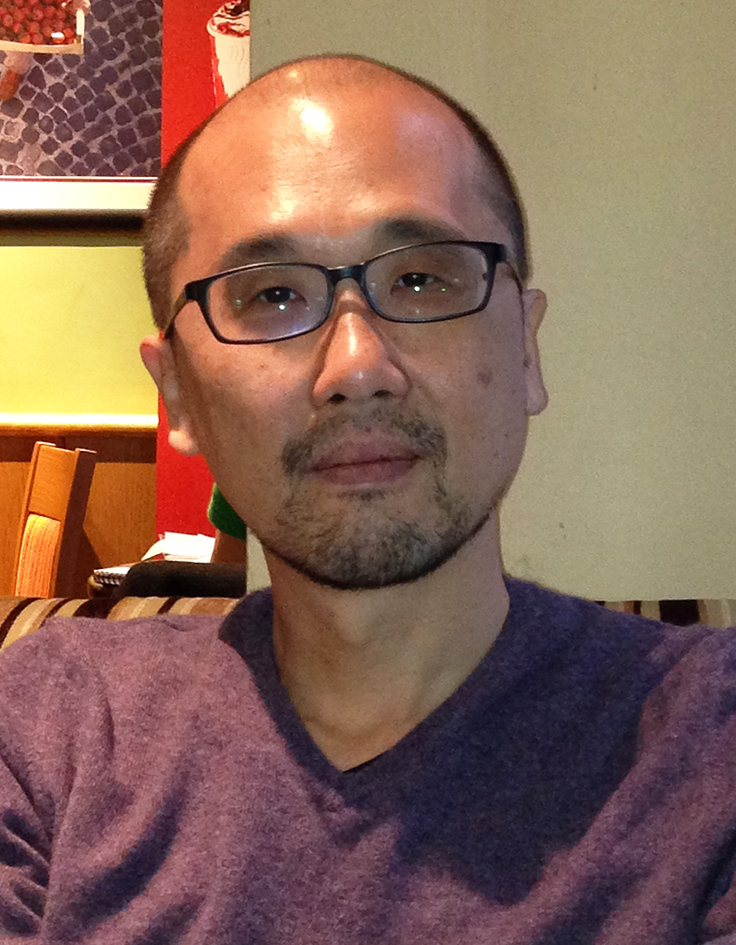
巫毓荃 Yu-chuan Wu
副研究員
- 電話番號:02-26523116
- Email: chuanwyc@asihp.net
学歴
英國倫敦大學學院衛爾康醫學史研究中心博士
専門分野
東アジア医学史、精神医学史・心理学史
巫毓荃為臺灣大學醫學系學士,原為精神科醫師,2005 年於清華大學歷史研究所取得碩士學位,2012 年於倫敦大學學院衛爾康醫學史研究中心取得歷史學博士學位。其主要研究興趣是東亞的精神醫學、心理學與心理治療史,目前研究聚焦於二十世紀初日本的心理治療,包括自西方引入以及日本本土的心理治療法。除了嘗試脈絡性地理解心理治療的概念與實作外,也強調與西方的比較。他的論文散見於《臺灣社會研究季刊》、《新史學》、Journal of the History of Medicine and Allied Sciences、Culture, Medicine, and Psychiatry、History of Science 等期刊,包括〈消失的憤怒:日治晚期藤澤茽的原住民心理學實驗〉、“A Disorder of Qi: Breathing Exercise as a Cure for Neurasthenia in Japan, 1900-1945”、“Straighten the Back to Sit: Belly-Cultivation Techniques as ‘Modern Health Methods’ in Japan, 1900-1945”、“Techniques for nothingness: Debate over the comparability of hypnosis and Zen in early-twentieth-century Japan” 等。
學位論文
- 《「病態」的民族:日治晚期台灣的民族性精神疾病史》(新竹:國立清華大學歷史研究所碩士論文,2005)。
- “A Disorder of Ki: Alternative Treatments for Neurasthenia in Japan, 1890-1945” ( PhD diss., Wellcome Trust Centre for the History of Medicine, University College London, UK., 2012).
期刊論文
- 巫毓荃、鄧惠文,〈熱、神經衰弱與在台日人:日治晚期台灣的精神醫學論述〉,《台灣社會研究季刊》54 (2004):61-104。同文經增補資料修訂後,以〈氣候、體質與鄉愁──殖民晚期在台日人的熱帶神經衰弱〉為題,收入於李尚仁編輯,《帝國與現代醫學》(臺北:聯經出版公司,2008),頁55-100。
- 〈思鄉病與「性症候群」:日治晚期台灣日台人男性的心氣症〉,《女學學誌》21 (2006):1-68。
- 〈消失的憤怒:日治晚期藤澤茽的原住民心理學實驗〉,《新史學》18.2 (2007):103-155。同文刪節版翻譯為英文,刊行於East Asian Science, Technology and Society: An International Journal 6.2 (2012): 199-219.
- “A Disorder of Qi: Breathing Exercise as a Cure for Neurasthenia in Japan, 1900-1945,” Journal of the History of Medicine and Allied Sciences 71.3 (2016): 322-344, doi: 10.1093/jhmas/jrv029.
- “Straighten the Back to Sit: Belly-Cultivation Techniques as 'Modern Health Methods' in Japan, 1900-1945,” Culture, Medicine, and Psychiatry 40 (2016): 450-474, doi: 10.1007/s11013-016-9487-6.
- “Techniques for nothingness: Debate over the comparability of hypnosis and Zen in early-twentieth-century Japan,” History of Science 56.4 (2018): 470-496,
doi.org/10.1177/0073275317743120. - “The Moral Power of Suggestion: A History of Suggestion in Japan, 1900-1930,” Journal of the History of the Behavioral Sciences 55.1 (2019): 21-39, doi.org/10.1002/jhbs.21944.
- “Seeking Double Personality: Nakamura Kokyō's Work in Abnormal Psychology in Early Twentieth-Century Japan,” Journal of the History of the Behavioral Sciences 56.4 (2020): 258-277.
- “Hypnosis, Psychoanalysis, and Morita therapy: The Evolution of Nakamura Kokyō's Psychotherapeutic Theories and Practices,” History of Psychiatry 33.3 (2022): 279-292.
- 〈專業、國家、美援與民間社會——1945-1970年臺灣的精神醫療〉,《新史學》33.3 (2022):87-150。
- 〈「觀法」與「信法」:井上圓了的心理治療學〉,《新史學》34.3 (2023):1-55。
- “Work, Self, and Society: A Socio-historical Study of Morita Therapy,” Culture, Medicine, and Psychiatry (2024.2), doi.org/10.1007/s11013-024-09845-9.
專書(論文集)之一章
- 〈從體質、民族性到心理治療:帝大精神病學教室的民族精神醫學研究〉,收入於即將出版的《迎向臺大百年學術傳承講座III:臺北帝大醫學部論文集》(國立台灣大學出版中心)。
主編之專書(論文集)
- 王文基、巫毓荃編輯,《精神科學與近代東亞》(臺北:聯經出版社,2018.12)。
學術會議論文
- 〈氣候、體質與鄉愁〉,發表於第一屆臺灣科學、技術與社會(STS)工作坊,2004年。
- 〈疏離的情緒與反抗的自我:當代台灣由神經衰弱到憂鬱症的轉移〉,發表於憂鬱、自我與社會:憂鬱盛行的社會歷史解碼,臺灣精神分析學會,臺北,2006年。
- “Hypnotherapy in Japan, 1890-1945: A Modern Way of Practicing Zen?” (paper presented at the Future of History of Medicine, Wellcome Trust Centre for the History of Medicine at UCL, London, 2010).
- “Historiography of Psychiatry: An Overview,”發表於第四十九屆臺灣精神醫學會年會,高雄,2010年。
- “A Disorder of Qi: Hypnotism-derived Psychotherapy for Neurasthenia in Japan, 1890-1945 ” (paper presented at the Fourth EASTS International Conference: Engaging East Asian Science, Technology and Society, Taipei, Taiwan, 2012).
- “Psychotherapy at Home: Morita Therapy for Neurotic Disposition in Japan, 1919-1938,”發表於D. Kim Foundation for the History of Science and Technology in East Asia主辦,2014 Annual Meeting and Workshop,韓國:釜山,2014年1月4-7日。
- “From an Abnormal Mental State to a Sublime State of Nothingness: A Brief History of Hypnosis in Japan, 1900-1930,” 發表於2015 Annual Conference of the Association for Asian Studies (AAS) (Chicago, 2015.3.27). 〔因有事無法出席此會議,但有人代為宣讀論文〕
- 〈無我與心機一轉:二十世紀上半葉日本的催眠現象〉,發表於陽明大學舉辦之Mapping Mental Health in East Asia: An International Workshop,臺北,2015年8月21日。
- “Techniques for Nothingness: Debate about the Comparability of Zen and Hypnosis in Early Twentieth-Century Japan,” 發表於中央研究院歷史語言研究所、亞洲醫學史學會等主辦,「第八屆亞洲醫學史學會雙年會」(Medicine and Modernity in Asia: The Eighth Meeting of the Asian Society for the History of Medicine),臺北:中央研究院歷史語言研究所,2016年9月30-10月1日。
- 〈「空」的技術:二十世紀初日本關於催眠與禪定異同之論辯〉,發表於中央研究院歷史語言研究所學術講論會,2016年10月17日。
- 〈暗示的道德力量:二十世紀初日本的暗示療法〉,發表於中央研究院歷史語言研究所學術講論會,2018年6月25日。
- 〈作為一門跨領域學科的醫學史〉,中央研究院歷史語言研究所90週年所慶研討會,2018年10月23日。
- “From the Colonial to the Postcolonial: The Psychiatric Career of a Colonial Psychiatrist,” 發表於中央研究院「『殖民醫學』再榷:本質與定義的思考」主題計畫主辦,「『殖民醫學』再榷:本質與定義的思考」工作坊,臺北:中央研究院,2018年12月2日。
- 〈潛在意識、記憶與歇斯底里:中村古峽與他的「二重人格之女」〉,發表於中央研究院歷史語言研究所學術講論會,2020年11月9日。
- 〈「觀法」與「信法」:井上圓了的心理治療學〉,世界史研究室討論會,臺北:中央研究院歷史語言研究所,2021年9月15日。
- 〈專業、國家、美援與民間社會:1945–1970年台灣的精神醫療〉,臺灣精神醫學會60週年年會暨學術研討會主題演講,網路會議,2021年11月6日。
- “Kanhō and Shinhō: Inoue Enryō's Invention of Shinri Ryōhō (Psychotherapy) in the Late Nineteenth Century,”EANASE (East Asian Network for the Academic Study of Esotericism) 主辦,A Century of Usui Reiki Ryōhō: The History, Present, and Future of a Global Japanese Spiritual Therapy, 網路會議,2022年5月28日。
- 〈「觀法」與「信法」:井上圓了的心理治療學〉,發表於中央研究院歷史語言研究所111年度第17次學術講論會,2022年11月14日。
- 〈從凝視球到呼吸法:二十世紀初日本催眠技術的演變〉,發表於中央研究院歷史語言研究所113年度第16次學術講論會,2024年10月28日。
- 〈戀愛至上或非關愛情?一份本島青年的心理治療記錄〉,發表於台灣精神醫學會第64週年年會暨學術研討會,臺南,2025年11月9日。
他類論文
- 〈近代心理治療史隨想〉,「歷史學柑仔店」網站,2015.11.27。
- 〈注意力不足過動症爭議的十個話題〉,「歷史學柑仔店」網站,2017.3.24。
- 〈精神科學與現代東亞〉,「歷史學柑仔店」網站,2018.11.9。
- 〈中村古峽與他的二重人格之女〉,「歷史學柑仔店」網站,2019.11.8。
- 〈台灣精神醫學史上的1930年〉,「歷史學柑仔店」網站,2020.11.27。
- 〈管與不管之間:1918-1920年臺灣殖民政府的流感防治對策〉,中央研究院「Covid-19 的人文社會省思」網站,2021;並收入康豹、陳熙遠主編,《研下知疫:COVID-19的社會人文省思》(臺北:中央研究院出版中心,2021),頁111-125。
- 〈中脩三與台北帝國大學精神病學講座〉,「歷史學柑仔店」網站,2022.1.21。另收入於《國立臺灣大學附屬醫院精神醫學部75週年紀念文集》,臺北:台大精神科。
- 〈戀愛至上或非關愛情?一份本島青年的心理治療記錄〉,「歷史學柑仔店」網站,2023.1.13。
- 〈戰後二十年間幾則疑似「被精神病」的新聞〉,「歷史學柑仔店」網站,2024.1.12。
- 〈「吳博士的台灣土產」—1909年吳秀三的台灣調查旅行〉,「歷史學柑仔店」網站,2025.2.21。
學術書評
- 書評:《武士刀與柳葉刀:日本西洋醫學的形成與擴散》,《科技、醫療與社會》21 (2015):287-290。
翻譯
- 巫毓荃譯, 羅伊.波特著,《瘋狂簡史》(臺北:左岸出版社,2004)。
學歷:英國倫敦大學學院衛爾康醫學史研究中心博士 (2012)
經歷:
本所助研究員 (2014.1-2022.1),副研究員 (2022.1- )
本所生命醫療史研究室召集人 (2025.7- )
亞洲醫學史學會 (Asian Society for the History of Medicine) 秘書 (2022.1- )
輔仁大學醫學系臨床助理教授 (2006.9-2013.12)
天主教耕莘醫院新店總院主治醫師 (2005.9-2013.12)
- 國際東亞科學、技術與醫療史學會竺可楨青年學者獎 (2008)
- 中央研究院深耕計畫獎助 (2024-2028)
- 中央研究院第一屆「中研學者」(2024.1-2028.12)



